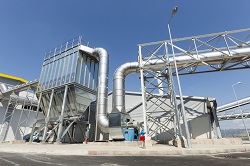Energy saving strategies for ports and terminals
Ports and terminals with associated transport networks and equipment-heavy operations are high energy consumers and carbon emitters. Recommendations from the EU-funded 'Green and effective operations at terminals and in ports' (GREEN EFFORTS)(opens in new window) project offer improved and standardised energy efficiencies in port and terminal operations. Fundamental is that energy consumption management is integrated in the Terminal Operation System. This will make terminal operators, port authorities and other stakeholders aware of the current spill of energy, hence the extent of emissions as well as the practical opportunities for improvement. The guidelines are based on research into factors such the use of low emission hydrocarbons, for example, liquefied natural gas and regenerative energy sources including photovoltaic, wind and biomass. Tools and strategies used by GREEN EFFORTS to minimise energy usage include peak power saving, energy storage and smart grid technology. Energy performance indicators were developed along with standardised calculation methods for energy consumption. Other considerations involved planning of the working areas and electronic devices. Key examples are reduction of travelling distances for cargo and avoiding use of overpowered equipment. From detailed analysis of yard design, recommendations included light emitting diodes for light control and occupancy sensors for full illumination of areas with work activities only. The consortium partners co-operated intensely with port authorities, relevant staff, job stewards and union representatives from the early stages of the study to ensure the feasibility and acceptance of the research results. The role of port authorities for example involves reduction of emissions from anchored vessels and haulage trucks, port traffic management and installation of pre-gates. Project partners included port facility suppliers, major energy technology companies, shipping and freight and equipment companies as well as high-profile educational establishments. These were not only restricted to Europe as companies in Los Angeles, Singapore and South America were part of the consortium. By comparing different industries like ports and airports, researchers concluded that, although each industry has specific requirements, common energy-saving measures can be applied to all. Hydrogen-powered vehicles, electromobility (electric propulsion of vehicles and fleets), renewable energy sources like wind, and implementing environmental zones with stricter emissions regulations are some of the main recommended actions. GREEN EFFORTS has provided the platform to establish a standard to calculate the carbon footprint of terminals and ports to target emissions in a focused way. Due to involvement of all key players including the sites themselves and other port-situated industries, implementation of recommendations stand to make ports better places to work. In parallel, they will achieve maximum energy usage efficiency, reduced emissions and improved work output.







